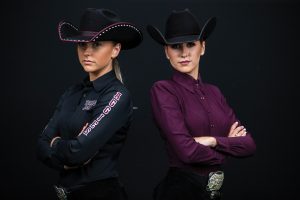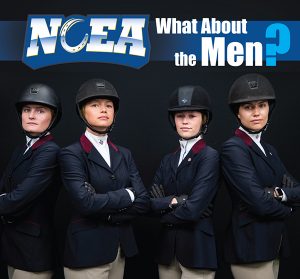paykwik al
online sportwetten
paykasa
paykwik
online sportwetten
paykasa
NCEA – What About The Men?
Have you ever considered that the majority of horse trainers in the horse industry are male, while the majority of competitors in the youth and amateur ranks are female? Furthermore, why is it that NCEA programs seem to be solely made up of female riders? Are they?
Equestrian is classified as an emerging women’s sport for NCAA I and II schools. Some NCAA schools compete within the Intercollegiate Horse Shows Association designation (IHSA) and are co-ed. However, there are no men’s varsity teams to speak of within NCEA.
Title IX is a phrase that’s among some of the first to be spoken to student athletes at any sort of team meeting or orientation. But while it’s spoken about less frequently in non-athletic collegiate groups, it still carries the same weight. Title IX is broadly written and explicitly states that “No person in the United States shall, on the basis of sex, be excluded from participation in, be denied the benefits of, or be subjected to discrimination under any educational program or activity receiving Federal financial assistance.” Now, this law is not only applicable to public universities, but governs almost every private university since students receive funds from the Federal government (FAFSA).
Title IX applies to athletics in three big ways: participation, scholarships, and extra benefits. In terms of participation, Title IX mandates that men and women be offered equal opportunities to participate in sports. This is not applied as having identical sports be offered to men and women but only as providing an equal opportunity to play. Second, Title IX requires that men and women receive scholarships in proportion to their participation. Third, both male and female student athletes must be provided with the same additional benefits.
Looking at Texas A&M as an example, the University is required to offer athletic opportunities in proportion to its almost 50/50 student body. This means that there must be one female athlete as a balance for every male athlete. So, with this rule in mind, how do football-centric universities balance the number of male football athletes when the sport has no female counterpart? For most schools, that’s where the addition of NCAA emerging sports, such as women’s equestrian, come into play. Sports like track, swimming and diving, softball, baseball, golf, and basketball, have a natural male to female balance that will arise either within the team or between the sport and its complement. However, at Texas A&M, there are three female sports that are used as a complement to football: women’s soccer, women’s volleyball, and women’s equestrian. This allows for a more competitive football roster while expanding opportunities for female athletes on campus.

Since football is an extremely high revenue sport for the majority of universities, the success of the football team is intrinsically correlated with the amount of revenue that will flow in every year. Usually, the better the team, the more crowded the stadium and the more tickets sold. As a result, many schools are trying to expand opportunities for female athletes, which is why sports like rowing, beach volleyball, and equestrian are on the rise throughout the country. The addition of traditional sports just won’t cut it for the majority of schools as football teams in both the SEC and the Big 12 become bigger and better.
But while women’s equestrian may be designated as an emerging sport, participation is rapidly growing as the equestrian industry grows as a whole. However, there are currently no plans to add any sort of men’s equestrian team, as there just doesn’t seem to be high enough demand. Speaking as a Horsemanship rider, I rarely encountered boys showing in Horsemanship as a youth. Now, as an amateur, I often find that women outnumber the men by a ratio of more than ten to one. So, as an emerging sport, it’s a much better strategy to target women rather than men since the demand for a women’s equestrian team is currently much higher than the demand for a men’s equestrian team.
But, if you are a man and looking to ride in college, don’t let the lack of a men’s equestrian team dissuade you. There are many schools that offer opportunities for co-ed club teams. Some of these are formatted similarly to NCAA equestrian and some focus on other riding disciplines, such as rodeo or polo. Some of these clubs even compete within the Intercollegiate Horse Show Association (IHSA) offering riders who may not attend a school with a NCAA equestrian team the chance to compete.
At the end of the day, there are opportunities for everyone to continue to ride in college. But, while that opportunity might not be offered to everyone at the NCAA level right now, I believe that as the sport grows, if there is enough demand, the addition of men’s equestrian would not be out of the question.











